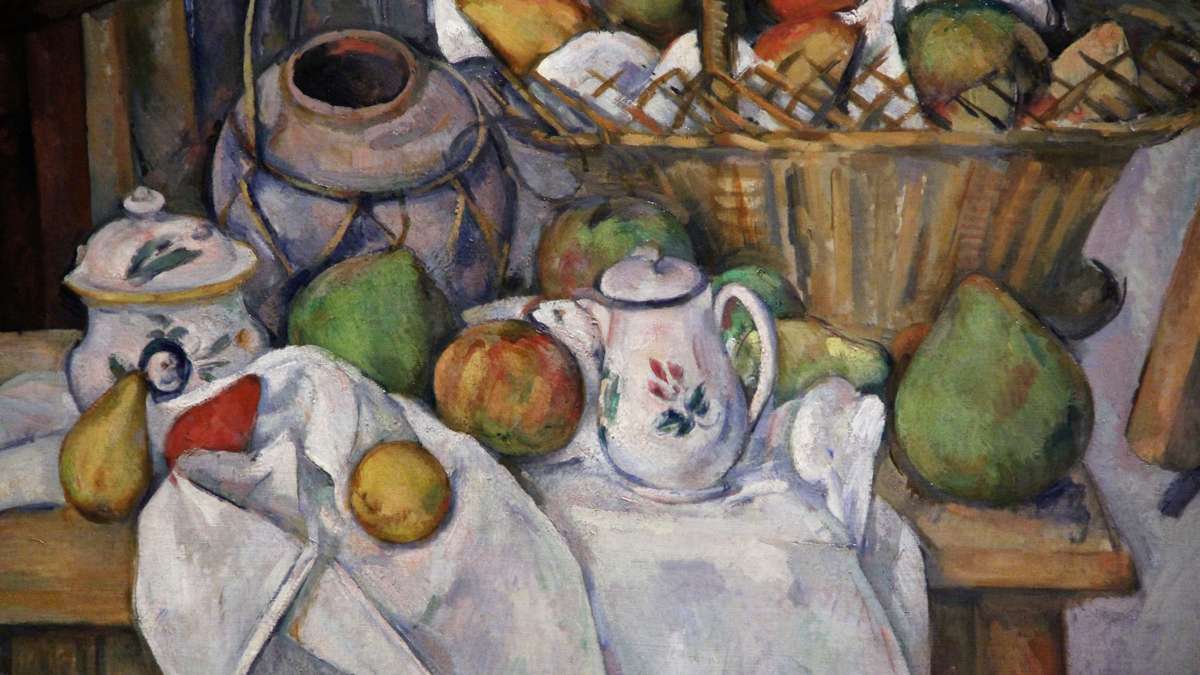In Barnes exhibit, Cézanne still lifes continue to astound
ListenThis weekend, the Barnes Foundation in Philadelphia will opens a temporary exhibition of paintings by the French painter Paul Cézanne. Never before seen at the Barnes, the 21 paintings reinvent the still life.
The Barnes already has 69 Cézanne paintings in its permanent collection. None is included in “The World is an Apple,” a traveling exhibition curated by the Art Gallery of Hamilton (Ontario). The small show is assembled from pieces on loan for museums and collections around the world.
“Museums don’t want to part with their Cézanne,” said Benedict Leca, curator at the Art Gallery of Hamilton. “They are the most popular, with Picasso and Rembrandt and the usual suspects. People are loathe to lend. They are high-value pictures, they are a favorite with the public. It’s always difficult to get loans, and it was a real team effort.”
Leca got help from Judith Dolkart, the Barnes’ chief curator (soon to be leaving for the Addison Gallery of American Art in Andover, Massachusetts). Albert Barnes discovered Cézanne in 1912, when he sent William Glackens to Paris to scout new art.
While Cézanne’s work was often derided by his contemporary critics for appearing to be roughly painted by an unskilled hand, Barnes immediately saw his genius for surface abstraction.
“I love his crudity, his boldness of statements, his apparent lack of skill in the handicraft of painting, and the absolute sincerity of the man,” Barnes is quoted on the exhibition wall text.
“The very things that the critics were assailing, were the very things that Barnes loved,” said Dolkart.
Cézanne wanted to “astound Paris with an apple.” The show is actually heavier with pears than apples, but the effect is the same. The 21 still lifes feature primarily fruit placed on dishes, askew on tables, and piled up on each other. Many are rendered with thick black outlines and flattened in their compositions. There are also flowers, skulls, and whole kitchen scenes.
Cézanne carried out his boast. The way he treated those apples reimagined the still life genre, which had been stuck in a tradition of heavy-handed symbolism of objects assigned very specific meanings.
“It’s exactly there where Cézanne invites you to make these imaginative leaps. Let’s look at the skulls,” said Leca, pointing to “Three Skulls on an Oriental Rug.”
“Cézanne stacks them up like apples. The way he paints them — you have dark cavities of the skulls that begin to ape the design of this carpet, which is a carpet but begins to look like a flowery landscape,” Leca said. “So you have these imaginative leaps that he is making.”
As one of the most popular artists of the 20th century, Cézanne’s body of work has been picked apart and repackaged every which way, but Leca says this is exhibition of only Cézanne still lifes, a genre the artist stayed with his entire artistic life.
WHYY is your source for fact-based, in-depth journalism and information. As a nonprofit organization, we rely on financial support from readers like you. Please give today.














